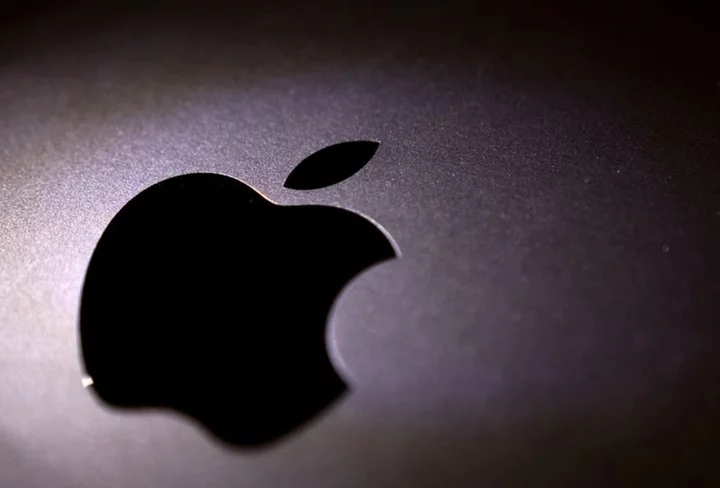The U.S. Supreme Court ruling striking down race-conscious policies in college admissions includes some subtle warnings to companies about the legal limits of workforce diversity efforts and is likely to fuel challenges to them, experts said.
Here are how some of the biggest corporations in the United States fare on diversity, equity and inclusion.
TECHNOLOGY:
Apple: According to its diversity and inclusion data until December 2021, 47% of leadership roles were occupied by women. The number of women leaders in research and development grew 8% between January and December 2021. White people made up 43.8% of total employees, as of 2021.
Microsoft: According to its 2022 report, 53.2% of employees were from racial and ethnic minorities. Additionally, 30% of core Microsoft workforce were women, 7.8% identified as having a disability and 12.4% of employees were self identifying Native American and Alaska Natives.
Amazon.com: In its employer information report in 2021, Amazon said about 26% of the executive positions were filled by women - 70% of these were white. About 60% of the laborers and helpers in the company were from the Black and Hispanic communities.
Alphabet : According to its 2022 annual diversity report, 43.2% of its workforce were Asian, 5.3% Black, 0.8% Native American and 33.5% women.
Meta: The Facebook owner's 2022 diversity report showed 37.1% of the overall workforce was female, 46.5% Asian, 4.9% Black and 6.7% Hispanic.
CONSUMER & RETAIL:
WALMART: Women represented more than 53% of its global workforce, according to its 2023 diversity report. In the United States, women of color accounted for 26.5% of the employees.
The company said 20.5% of its total U.S. workforce were Black, 4.8% were Asian and 19.3% were LatinX. African Americans held 9% of officer roles in the U.S., while 72.4% of the roles were held by Caucasians.
STARBUCKS: The coffee chain's U.S. store employee base is composed of 71.6% female workers, with 50.5% of the workforce being racial and ethnic minority groups. Hispanic or Latino workers held 30.5% of those roles, while Asians represented 5.8% and Black workers accounted for 8%.
PEPSICO: According to its 2022 report, women held 44% of management roles globally, while representation of Black and Hispanic workers at the manager level in the United States was 9% and 10.1%, respectively.
COCA-COLA: Female employees accounted for 44% of the beverage company's total global workforce, with 39% of senior leadership positions held by women.
Among its U.S. workforce, 48.1% were White, 22% were Black or African American, 14.6% Hispanic/Latino and 8.1% Asian.
FINANCIALS:
JPMORGAN CHASE: At the end of 2022, the bank's global workforce consisted of 49% female employees. Its U.S. workforce was composed of 14% Black, 18% Asian and 21% Hispanic employees.
BANK OF AMERICA: Half of its employees were women, while 50% of its U.S. workforce were people of color at end-2022. Its board has 53% diversity, including 33% women.
GOLDMAN SACHS: The investment bank employs over 48,000 people globally and had women in 33% of vice president roles globally as of end-2022. In addition, 4% of the total vice-presidents in the Americas were Black while 6% were Hispanic or Latino.
ENERGY:
EXXON MOBIL: As of November 1, 2022, 28% of its global workforce were women. The company also said 29% of its professional U.S. workforce were U.S. minorities while 5% were veterans.
CHEVRON: Of the 38,258 global employees in 2022, 27% were women. Among its U.S. employees, 30% were women while 43% were ethnic minorities.
VALERO ENERGY: As of end-2022, the company had 9,743 employees. About 30% of global professional employees were female, 11% of hourly employees were female and 19% of total employees were female.
About 37% of U.S. employees were Hispanic or Latino, Black or African American, Asian, American Indian or Alaskan Native, Native Hawaiian or Other Pacific Islander, or two or more races.
HEALTH & PHARMA:
MERCK : In 2021, women made up 50% of the company's workforce, while underrepresented ethnic groups accounted for 32%.
PFIZER: In 2022, 43% of Pfizer's top roles, which include vice presidents or above, were women, while men took up 56.9% of those jobs. Meanwhile, 7.4% of those in the role were Black and 71.9% were White.
JOHNSON & JOHNSON: In 2022, the company had women in 49% of management positions globally, and 36% of management positions in the U.S. were held by ethnic/racially diverse employees.
ABBVIE: In 2022, about 56% of AbbVie's 52,000 employees globally were women, while 37% of their employees were from underrepresented populations.
AUTOS & AEROSPACE:
FORD MOTOR: In 2022, 28.8% of the global salaried workforce and 24.5% of the senior managers were women. Among U.S. employees, 25.3% were women and 36.2% were members of minority groups.
TESLA: The EV maker, in its 2022 impact report highlights, said 67% of employees were from underrepresented groups; 28% were Hispanic or Latino, 21% were Asian, 11% were Black or African American, 2% were Native Hawaiian and 1% were American Indian.
BOEING: In 2022, about 9.9% of overall workforce were composed of women of color, while Hispanics and Latino workers made up 15.9% and 8.1%, respectively, of the employee base.
Source: Company reports, websites
(Reporting by Niket Nishant, Manya Saini, Leroy Leo, Manas Mishra, Deborah Sophia, Mrinalika Roy, Arunima Kumar, Ananta Agarwal, Kannaki Deka and Zaheer Kachwala in Bengaluru; Editing by Sweta Singh and Krishna Chandra Eluri)

